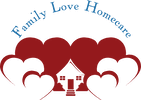By Pauline Shinjo
At Family Love Homecare we are often asked the question “What are the signs that a senior is in need of aged homecare?”. There is no short and simple answer, but there are a number of benchmarks that can provide some guidance. We believe it is important for family members to be aware of these benchmarks. We also believe that through this awareness, an informed decision can be made. Hence, we would like to shed a light on some common signs that could help you determine the next step for your family member. For professional aged care health providers, there are two levels of assessment to determine at-home care. They are “activities for daily living” (ADLs) and “instrumental activities for daily living”(IADLs). Firstly, ADLs are the basic abilities necessary for a person to care for themselves at home. These include:
- Bathing – This refers to a person’s ability to bathe, it assesses showering and bathingunder safe conditions without assistance.
- Dressing – The focus is on dressing independently. This would include exercising good judgment to choose appropriate clothing, for different events and situations.
- Grooming – This assessment looks at a person’s hair, skin, nails and dental care. It assesses the ability of a person to brush hair, cut nails, brush teeth, care for skin and other hygienic routines.
- Toileting – This benchmark focuses on the proper use of a lavatory. It is important to assess both bowel movements, bladder control, and cleaning thereafter.
- Eating and drinking – The ability of a person to eat and drink independently, at the proper times throughout the day. Some senior citizens may unknowingly miss a meal or even mistakenly eat a meal after already having a meal.
- Mobility – This looks at the ability to walk from one location to another. Walking is an important activity to do almost anything at home.
- Transferring – Transferring refers to the movement of the body into different positions. It is different from walking because it focuses more on body movement.
- Communication – Lastly is communication, the ability to express emotions, thoughts and ideas clearly to others without issues in delivery or speech.
This assessment is conducted by aged health care professionals to determine whether a senior citizen requires basic homecare around the house. There are also “Instrumental activities for daily living” (IADLs) which deal with the functional side of living. They are a bit more complex than the basic ADLs.




